What is a rain garden?
It’s a garden specifically designed to take advantage of where water naturally collects. In dry climates, this extra water allows a wider variety of plants to be grown.
Rain gardens can also be planned just to direct water away from certain areas, like home foundations or low spots that collect unwanted moisture. The idea is to capture and soak up storm water where it can be used in your garden.
Why create a rain garden?
Rains gardens can lessen erosion and allow rain water to soak into the ground renewing ground water supplies and control flooding. They attract wildlife, reduce hand watering and are attractive when used in place of high maintenance lawn areas. We had three downspouts that needed to be directed sensibly and a rain garden was a perfect solution. I wanted areas where I could grow plants that need extra water in our hot dry California summers.

2006 Summer- Dry creek and rain garden near the back entry, planted with teucrium, veronica, witch hazel and blue flax.
Where to put your rain garden
The easiest place to construct a rain garden is at the end of your drainage pipes leading from your homes downspouts. A rain garden should be at least 10 feet from your house, 15 feet from any septic system and 25 feet away from well water supply. If you have oaks, remember to keep your rain garden 10-15 feet away, which will also place your rain garden in sun or part sun.
We’re on a steep slope and there are three downspouts running underground that outlet about fifteen feet away from the house at each back corner and one in the center. Rocks stabilize the soil over the downspout and the bank was planted. See the volunteer mullen?
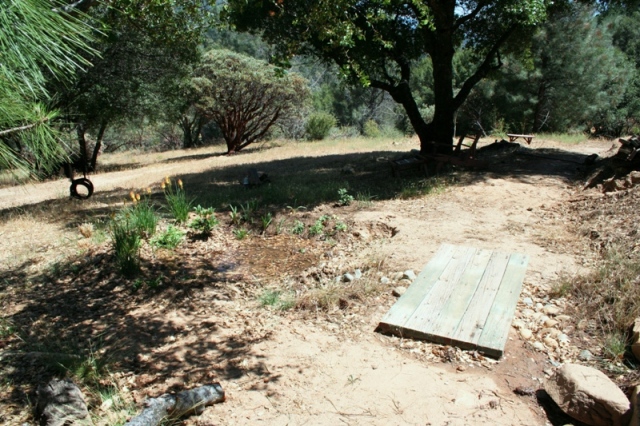
2007 Summer- Rain garden in the first year to the left of the ‘bridge’. Knifophia was moved and replaced with a rhododendron.
Digging and Planting your rain garden
You make a rain garden by digging a wide, shallow hole, possibly edging it with rocks and stones and planting around the edges to contain and use the runoff water for moisture loving plants. I used some cast off wood from the neighbor’s porch to make a dry bridge to cross.
It was a perfect project for a young boy visiting us who happens to be related. Digging the wide hole and filling it with all my extra garden soil, manure and fertilizer completed his part of the job. We filled it with water to test the drainage and small leaks were plugged. He had fun and slept well that night. Future gardener, maybe?
I planted a witch hazel tree and iris by one, Rhododendron, azaleas, columbine, cranesbill geranium, juncus and bush anemone in the center and at the other corner, blue-eyed grass, red twig dogwood and penstemon.
Plant list for rain gardens in California
Azaleas
Rhododendron
Iris
California Gray Rush
Columbine
Canna
Sweetflag
Redtwig dogwood
Sedge
Butterfly weed
Ajuga
Wild Ginger
Asters
Ferns
Lily of the Valley
Purple Coneflower
Bleeding Heart
Heuchera
Bee balm
Daffodil
Penstemon
Phlox
Dwarf Hinoki False Cypress
Spicebush
Oakleaf Hydrangea
St John’s wort
Viburnum
Maple
Serviceberry
Witchhazel
Ornamental grasses
Western goldenrod
Cinquefoil
Yellow eyed grass
Blue-eyed grass
Marsh aster
Veronica
Cardinal flower
Yellow monkeyflower
Creeping Jenny
***
See the whole progression of both areas, the back entry and the center downspout. The third downspout is aimed downhill toward the Sycamore to the south.


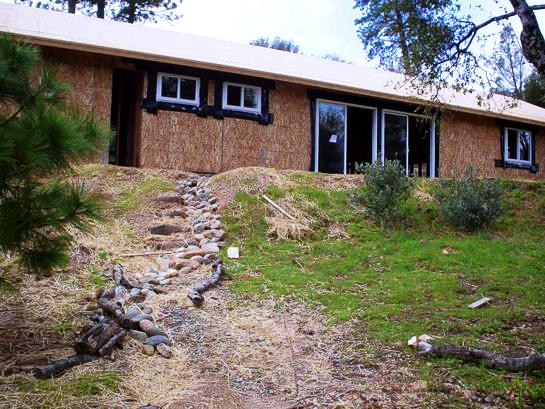
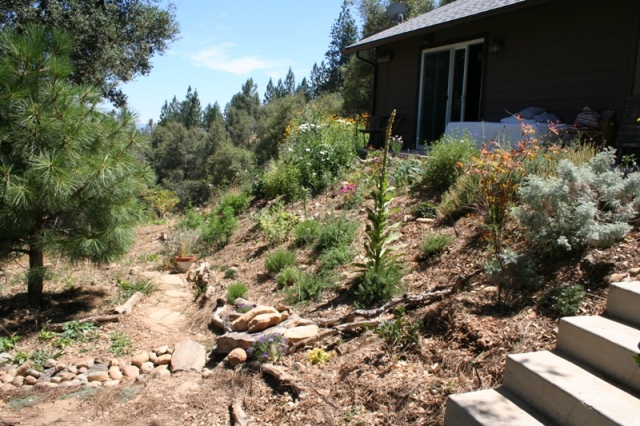
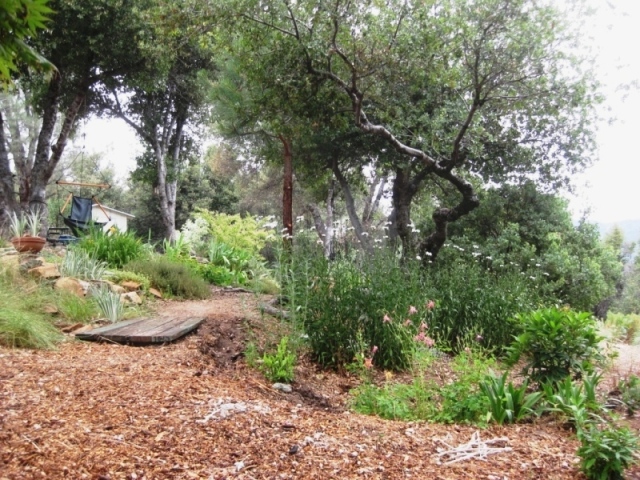
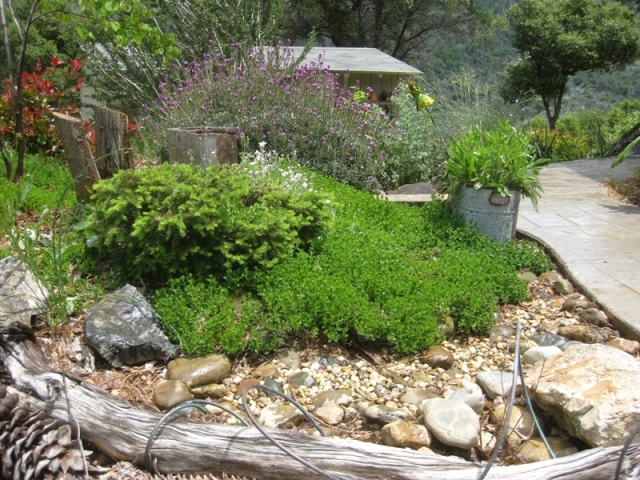
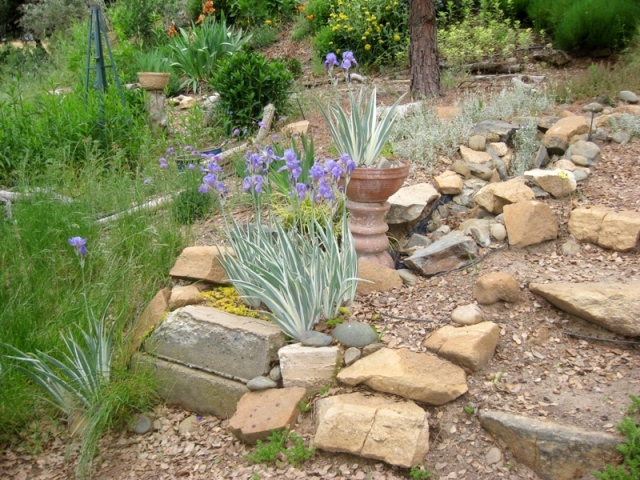
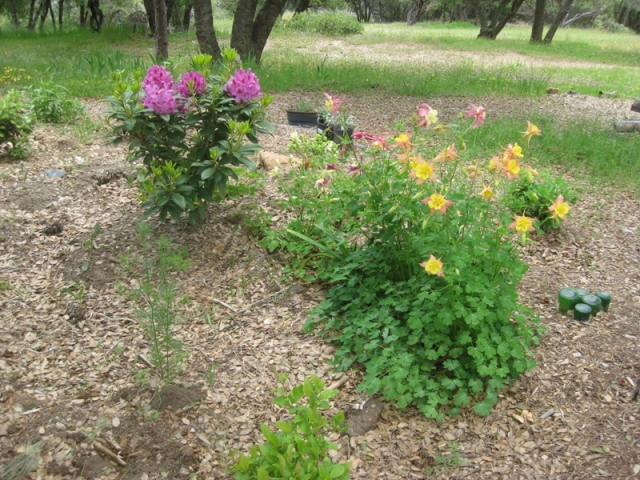

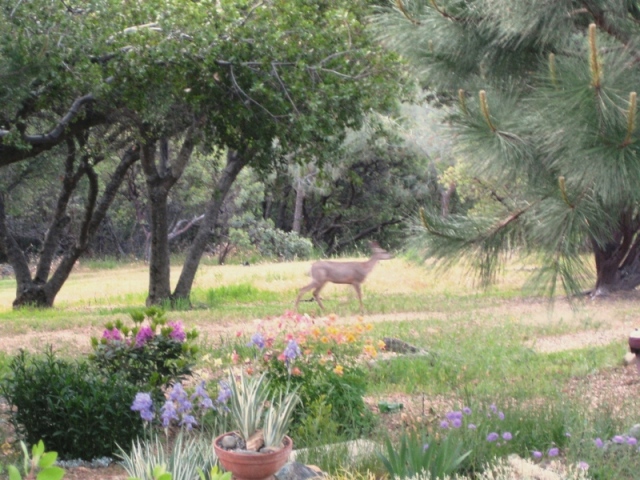
8 comments